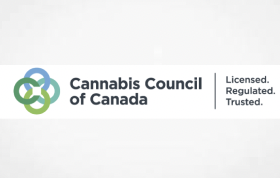Latest update 21 December 2017
Medicinal cannabis: patient information
Over the past few years, a number of Australians have expressed interest in the use of cannabis for medicinal purposes. The Commonwealth and State and Territory governments have either used their current laws or passed specific laws to allow the prescribing and dispensing of medicinal cannabis products. The Commonwealth, and in some cases, State and Territory governments, have also passed laws allowing cannabis cultivation and manufacture for medicinal purposes.
Currently there is limited evidence about the effectiveness of medicinal cannabis for use in different medical conditions. There is also little known about the most suitable doses of individual cannabis products
Currently there is limited evidence about the effectiveness of medicinal cannabis for use in different medical conditions. There is also little known about the most suitable doses of individual cannabis products.
This is why, with the exception of one product (nabiximols), medicinal cannabis products are not registered on the Australian Register of Therapeutic Goods (ARTG) and, in like most other countries, are not available as registered prescription medicines.
For a particular product to be registered on the ARTG, a sponsor (usually a company) would need to submit a dossier of evidence on the clinical efficacy, safety and manufacturing quality of a particular medicinal cannabis product to the Therapeutic Goods Administration. At this time, the Australian Government does not subsidise the cost of medicinal cannabis products through the Pharmaceutical Benefits Scheme (PBS).
The Australian Government Department of Health and the NSW, Victorian and Queensland state governments commissioned a team from the Universities of New South Wales, Sydney and Queensland under the co-ordination of the National Drug and Alcohol Research Centre (NDARC) to review the available clinical evidence for using medicinal cannabis. The team focused on the five areas for which the largest numbers of studies have been carried out – palliative care, chemotherapy-induced nausea and vomiting, chronic pain, multiple sclerosis and epilepsy in paediatric and adult patients.
The researchers conducted a review of previously published reviews from multiple databases such as Medline, Embase, PsychINFO and EBM Reviews. Searches were guided by a specialist Librarian using specific search terms and were limited to studies published between 1980 and early 2017. Two reviewers independently examined titles and abstracts for relevance and the GRADE (grading of recommendations, assessment, development and evaluation) approach to evaluating the quality of evidence was also applied. The GRADE[1] method is the international standard that applies to weighting of evidence in scientific and medical literature and gives weight to certain evidence based on the level of evidence and strength of recommendation. For example, evidence as a result of randomised control trials (RCTs) are given priority because this study method typically yields more reliable results. RCTs are at the top of the hierarchy of evidence.
This brochure provides a broad overview of the current evidence to support using medicinal cannabis for the above conditions. It also highlights the cautions surrounding treatment, how medicinal cannabis can be prescribed and future research.
The Department of Health will update this brochure as new evidence emerges.
Source: http://www.tga.gov.au/publication/guidance-use-medicinal-cannabis-australia-patient-information


















